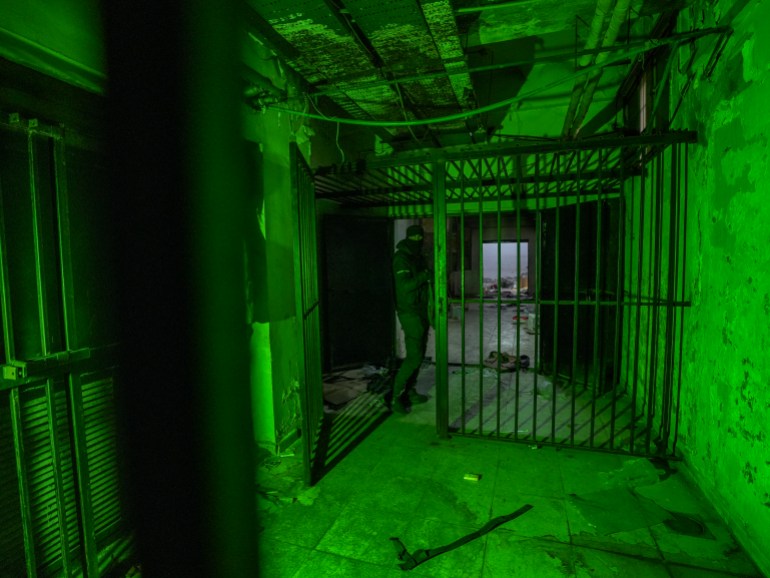Damascus, Syria – “Palestine Branch”, also known as Branch 235, is an intelligence-run prison in Syria that everyone in the country feared and loathed.
Established in 1969, the notorious building on the southern outskirts of Damascus became known for systematic torture by the Syrian regime against its opponents and the close eye it kept on its own people.
The branch rose in the 1980s, expanding from its initial mandate of monitoring Palestinian groups and all matters concerning Palestine, it took on more and more files until it was handling more than any other branch and became widely known for its brutal torture methods and inhumane conditions.
During the early stages of the Syrian revolution, the branch was said to specifically target residents of Damascus’s southern districts, especially al-Midan, al-Qadam, Dafshok, and the Yarmouk Palestinian refugee camp.
Outside Palestine Branch, military trucks were parked haphazardly, mattresses, documents and pictures scattered on the floor along with military uniforms and boots left behind.
On December 8, 2024, the Syrian regime fell and opposition forces freed prisoners as they went, allowing them to emerge from the regime’s grip, carrying harrowing tales of torture and suffering.

Inside the branch, the cells tell the tale of the people who went through it. There are cameras in every cell, drawings and writing on the walls carved with fingernails or whatever else the detainees could find. A little bit of scabies ointment left over in one cell.
It is difficult to move around the basement now, because the sewage system malfunctioned, filling some corridors and cells with stagnant water.
Also in the basement are the toilets, where guards would take detainees once a day, in the morning, beating and insulting them.
Abu Jaber, who was in cell seven, recounted the torture he endured in this branch, from the moment he entered: “They whipped us. It took two days to recover from the pain.
“After I left, I was afraid to pass near [our cell], even if it was on my way. I would take a longer route to avoid it.”
Each detainee had a number according to the cell they were in. For example, “33 on Group 2” would indicate the 33rd detainee in the second group cell.
On the upper floor, there were what former prisoners referred to as “torture rooms”. Dim, grey rooms with a large glass window on one of the walls.